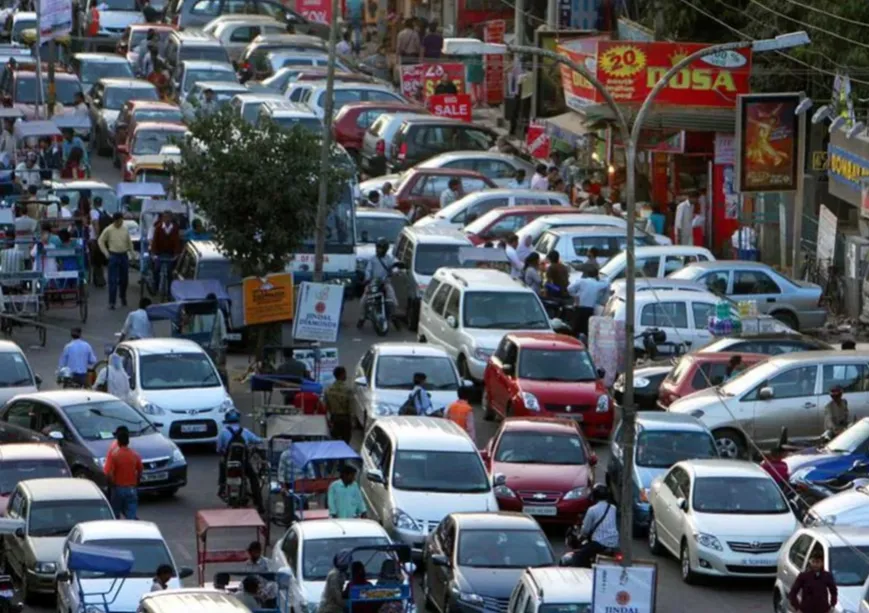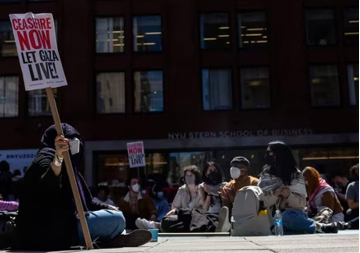
With mounting vehicular density in India’s cities, traffic congestion has emerged as a major challenge, leading to rising criticism of city administrations about their inability to provide relief. The citizens of Pune went as far as to produce a report on their city’s traffic and submit it to the city police for necessary action. The report recommended specific solutions to manage and regulate traffic. In Bengaluru, frustrated citizens named a new trend for their fellow commuters—“Work from Road”. Looking at the criticality of the situation, some of the cities have now begun to look at all avenues of parking to keep their cities reasonably mobile.
The citizens of Pune went as far as to produce a report on their city’s traffic and submit it to the city police for necessary action.
While cities face an onslaught of cars, the automobile sector is unlikely to be squeezed, given its huge direct and indirect economic and employment potential. At the beginning of 2023, India surpassed Japan to become the third-largest automobile market in the world, logging 4.25 million new car sales. By 2021, it had accounted for 8 percent of the country’s total exports, 7.1 percent of India’s GDP, and generated 37 million jobs. India was also the world’s largest manufacturer of two-wheelers, the third-largest heavy truck manufacturer and the fourth-largest car manufacturer.
The states also view the automobile sector positively, with motor vehicle tax being one of the largest revenue sources. Against this backdrop, no policy appears around the corner that would clamp down on the manufacturing and sale of motor vehicles in the country. Nor do any state-wide or country-wide regulatory steps seem to be under contemplation to put a cap on the number of cars in a city. Since cities have little control over automobile policy, they must be ready to accommodate more automobiles within their geographical limits. This scenario has made some cities investigate better and more parking options.
There are several options available in terms of parking. These could be on-street parking, off-street parking, multi-storied off-street parking lots, mechanical parking, and underground parking. The authorities must study the pros and cons of any decision regarding a particular kind of parking. Street-side parking is most convenient for commuters. If slots are available on the road, they can quickly park, finish their job, and leave the space for someone else. Multiple uses are, thereby, possible in the same single space. The downside is that a portion of the road gets taken up for stationary vehicles, diverting public space for private use. Thus, roadside parking must be allowed only with important caveats. The first is that all roads of a city may not be amenable to parking, either on account of their narrow width, their criticality in terms of security, city mobility or accident vulnerability. City mobility and street-side parking are inversely proportional—the more on-street parking is allowed, the less the city’s mobility would be. By its very nature, therefore, street-side parking needs to be carefully planned and permitted. In any event, it cannot be free, like any other public space put to private use. It must also be priced more than off-street parking, especially during peak hours, with a tight maximum time limit.
City mobility and street-side parking are inversely proportional—the more on-street parking is allowed, the less the city’s mobility would be.
This article discusses the pros and cons of underground parking, one of the several other possible alternatives. Many Indian cities, including Delhi, Mumbai, Ahmedabad, amongst others, seem to be considering this option. It allows the utilisation of space below the land surface, thereby, preventing disturbance to on-ground activities already taking place. In crowded areas, they especially become relevant, where the need for parking is acute, and such space at grade is difficult to locate. In certain locations where land costs are prohibitive, surface parking lots are not the best possible use of rare and high-value land, and it makes sense to look at the underground alternative. Furthermore, underground parking allows for greater aesthetics above ground.
However, the construction of such parking poses some challenges. It is, therefore, important that before such construction is attempted, a proper appreciation of any such proposals is undertaken ab initio. This is generally done through a pre-feasibility study comprising an assessment of the parking demand, the available supply in the area, and its adequacy. The study would further look at site status and whether conditions are suitable for underground parking from the urban planning perspective. It would also necessitate several site visits to make a scientific appraisal of site accessibility, land use and location and physical features such as street geometry and supporting infrastructure facilities. A study of site accessibility would include the pattern of traffic flow around the proposed site, road infrastructure, road width and density of activities in the area.
After such a pre-feasibility study, one would move forward towards a detailed feasibility study of the proposal for underground parking. In case it turns out at the very beginning that underground parking at the suggested site is not required or not feasible, the proposal would have to be abandoned at that very stage. The rejection could come on several counts. Since our cities are constantly adding infrastructure, any additional infrastructure proposal contemplated in the area may result in bringing out the fact that underground parking would run counter to that infrastructure. Sites below a well-developed garden featuring mature, large trees would be unsuitable. So would sites with limited accessibility or insufficient road width. If there is adequate parking in the specified area, the need to create more parking infrastructure is rendered redundant. There could be reasons of technical non-feasibility as well, such as small or irregular areas. For coastal cities, climate change and the consequential global warming have brought on the table fresh issues to consider. The most significant is to assess the impact of sea rise on the suggested site and whether the location is likely to remain above water for a considerable period of its life span.
Since our cities are constantly adding infrastructure, any additional infrastructure proposal contemplated in the area may result in bringing out the fact that underground parking would run counter to that infrastructure.
What makes underground parking more difficult in Indian cities is that urban local bodies, in general, are financially feeble and may not be in a position to spare large sums of money for a non-obligatory function. These facilities are cost-intensive, with high maintenance and operational costs. For instance, an INR 3-billion tender was floated by the Brihanmumbai Municipal Corporation (BMC) last year for the construction of three underground parking lots. These would create parking slots for a total of 1,044 cars. This means one parking slot would cost around INR 2.9 million. While costs are subject to site-specific conditions, rough estimates show that the average cost of an underground parking facility would be, on average, at least twice more costly than a surface parking facility without considering the cost of land.
A multi-storeyed underground parking, with additional excavation expenses and a robust structural system to support the weight of the cars, would be pricier. The price will rise further if the structural system is also required to support buildings above the parking lot if the parking is not above an open space. Some estimates suggest costs as high as 15 to 17 times that of surface parking. Underground parking, therefore, should not be accorded priority if the city could make do with other parking options.
Ramanath Jha is a Distinguished Fellow at the Observer Research Foundation
The views expressed above belong to the author(s). ORF research and analyses now available on Telegram! Click here to access our curated content — blogs, longforms and interviews.




 PREV
PREV


